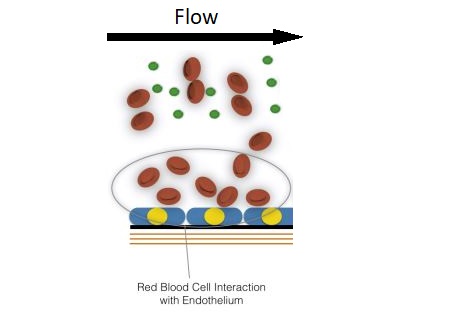Forces of RBC interaction with single endothelial cells in stationary conditions: Measurements with laser tweezers
Arseniy A. Kapkov, Alexey N. Semenov, Petr B. Ermolinskiy, Andrei E. Lugovtsov and Alexander V. Priezzhev

Red blood cells (RBCs) are able to interact and communicate with endothelial cells (ECs). Under some pathological or even normal conditions, the adhesion of RBCs to the endothelium can be observed. Presently, the mechanisms and many aspects of the interaction between RBCs and ECs are not fully understood. In this work, we considered the interaction of single RBCs with single ECs in vitro aiming to quantitatively determine the force of this interaction using laser tweezers. Measurements were performed under different concentrations of proaggregant macromolecules and in the presence or absence of tumor necrosis factor (TNF-αα) activating the ECs. We have shown that the strength of interaction depends on the concentration of fibrinogen or dextran proaggregant macromolecules in the environment. A nonlinear increase in the force of cells interaction (from 0.4 pN to 21 pN) was observed along with an increase in the fibrinogen concentration (from 3mg/mL to 9mg/mL) in blood plasma, as well as with the addition of dextran macromolecules (from 10mg/mL to 60mg/mL). Dextran with a higher molecular mass (500kDa) enhances the adhesion of RBCs to ECs greater compared to the dextran with a lower molecular mass (70kDa). With the preliminary activation of ECs with TNF-αα, the force of interaction increases. Also, the adhesion of echinocytes to EC compared to discocytes is significantly higher. These results may help to better understand the process of interaction between RBCs and ECs.
